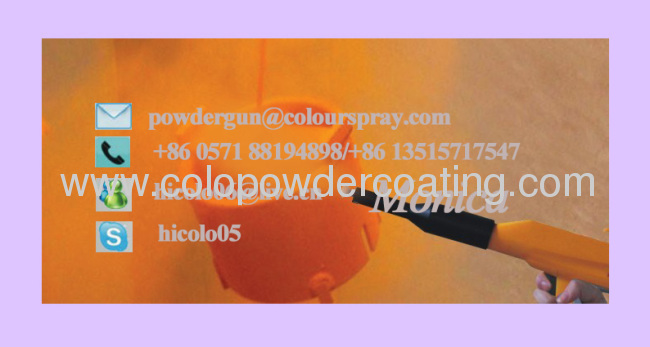This popular size for small shops measures 1500mm in height by 800mm in width by1 000mm in depth
This popular size for small shops measures 1500mm inheight by 800mm in width by1 000mm in depth. Our Powder Booths makeefficient use of shop space and are designed for manual "batch" orautomated/process powder coating with or without overspray reclamation.Shop air is drawn into the powder coating spray booth, and then passesthrough the powder booth's workspace into a filtered plenum integratedinto the wall(s). The air is filtered in multiple stages and thendischarged to the outside atmosphere or routed back into the room.Disposable filters are easy to inspect and replace.
1.manual booths are the right solution for every application: for newstart up and experienced users alike, or as a one-off solution for smallor medium series.
2. A space-saving design,integrated functions and ease of operationprovide ideal conditions for efficient and high quality manual coating.
3.by maintaining the airflow at design levels. During operation overspraypowder accumulates on the cartridge filters. As the cartridge filtersload, airflow decreases and negative pressure rises within the airhandler. A timer activates a system of air purging valves that clear thecartridge filters of accumulated powder to ensure maximum life.

The powder coating process
The powder coating process involves three basic steps:
- Part preparation or the pre-treatment
- The powder application
- Curing
Part preparation processes and equipment
Removalof oil, soil, lubrication greases, metal oxides, welding scales etc. isessential prior to the powder coating process. It can be done by avariety of chemical and mechanical methods. The selection of the methoddepends on the size and the material of the part to be powder coated,the type of soil to be removed and the performance requirement of thefinished product.
Chemicalpre-treatments involve the use of phosphates or chromates in submersionor spray application. These often occur in multiple stages and consistof degreasing, etching, de-smutting, various rinses and the final phosphating or chromatingof the substrate. The pre-treatment process both cleans and improvesbonding of the powder to the metal. Recent additional processes havebeen developed that avoid the use of chromates, as these can be toxic tothe environment. Titanium zirconium and silanes offer similar performance against corrosion and adhesion of the powder.
Another method of preparing the surface prior to coating is known as abrasive blasting or sandblastingand shot blasting. Blast media and blasting abrasives are used toprovide surface texturing and preparation, etching, finishing, anddegreasing for products made of wood, plastic, or glass. The mostimportant properties to consider are chemical composition and density;particle shape and size; and impact resistance.
Siliconcarbide grit blast medium is brittle, sharp, and suitable for grindingmetals and low-tensile strength, non-metallic materials. Plastic mediablast equipment uses plastic abrasives that are sensitive to substratessuch as aluminum, but still suitable for de-coating and surfacefinishing. Sand blast medium uses high-purity crystals that havelow-metal content. Glass bead blast medium contains glass beads ofvarious sizes.
Cast steelshot or steel grit is used to clean and prepare the surface beforecoating. Shot blasting recycles the media and is environmentallyfriendly. This method of preparation is highly efficient on steel partssuch as I-beams, angles, pipes, tubes and large fabricated pieces.
Differentpowder coating applications can require alternative methods ofpreparation such as abrasive blasting prior to coating. The onlineconsumer market typically offers media blasting services coupled withtheir coating services at additional costs.




